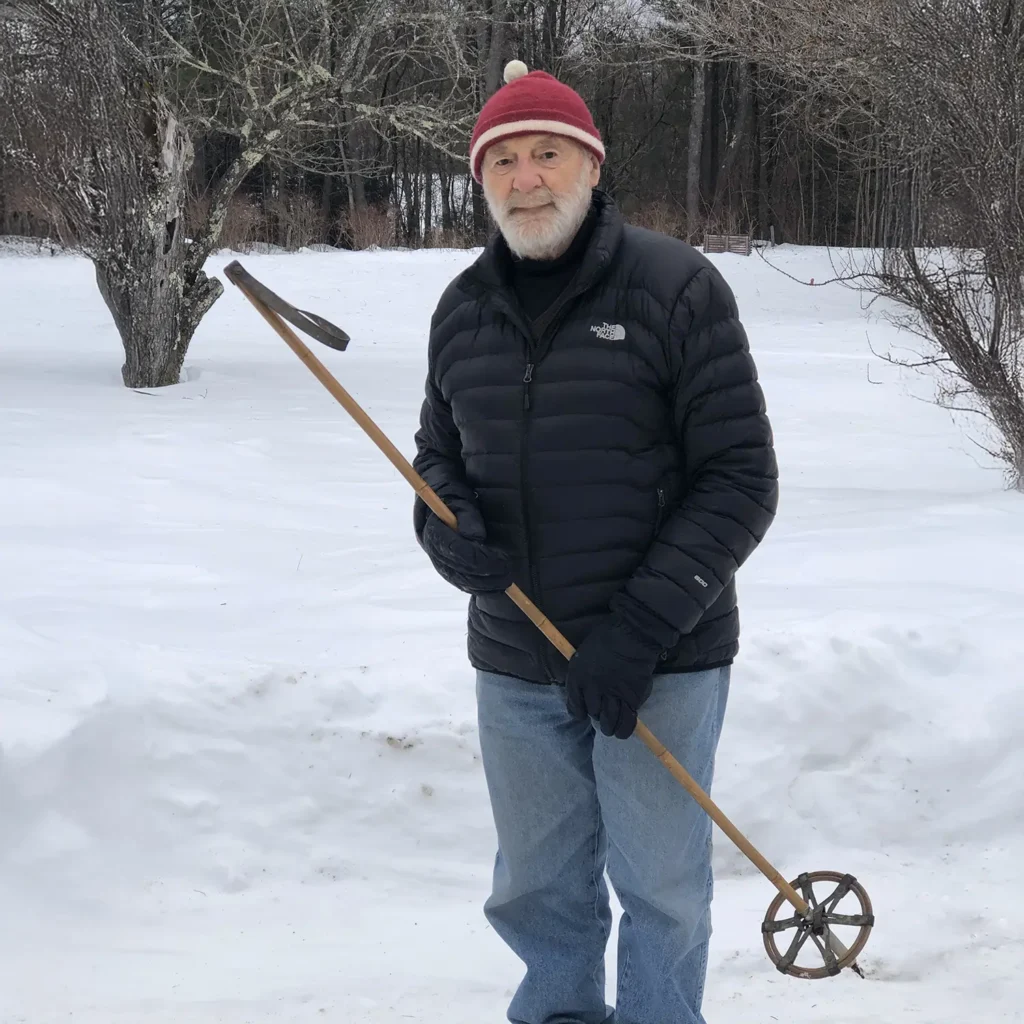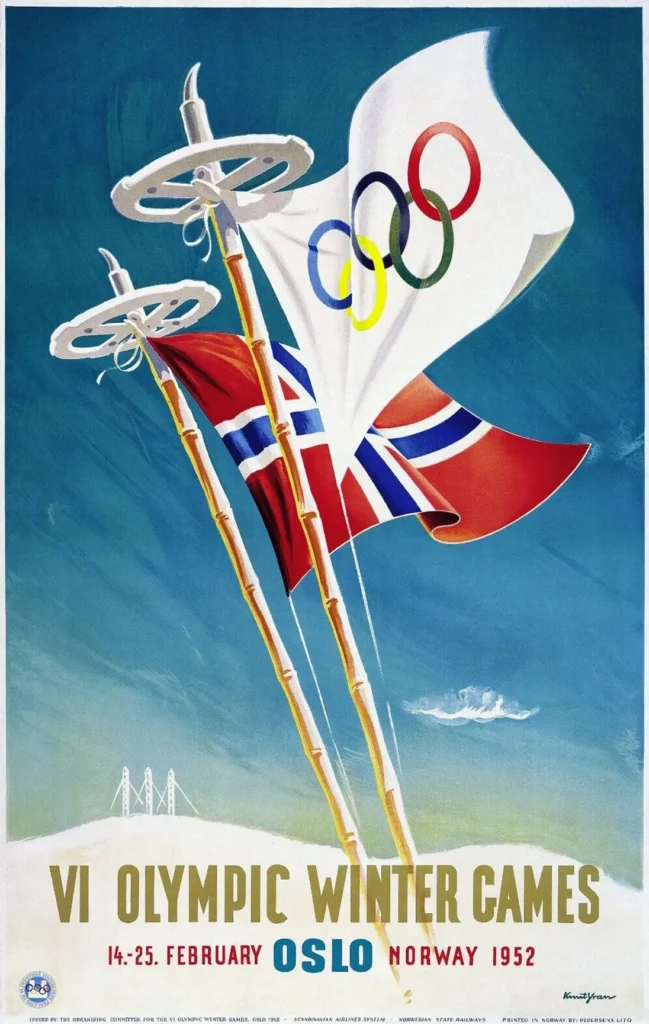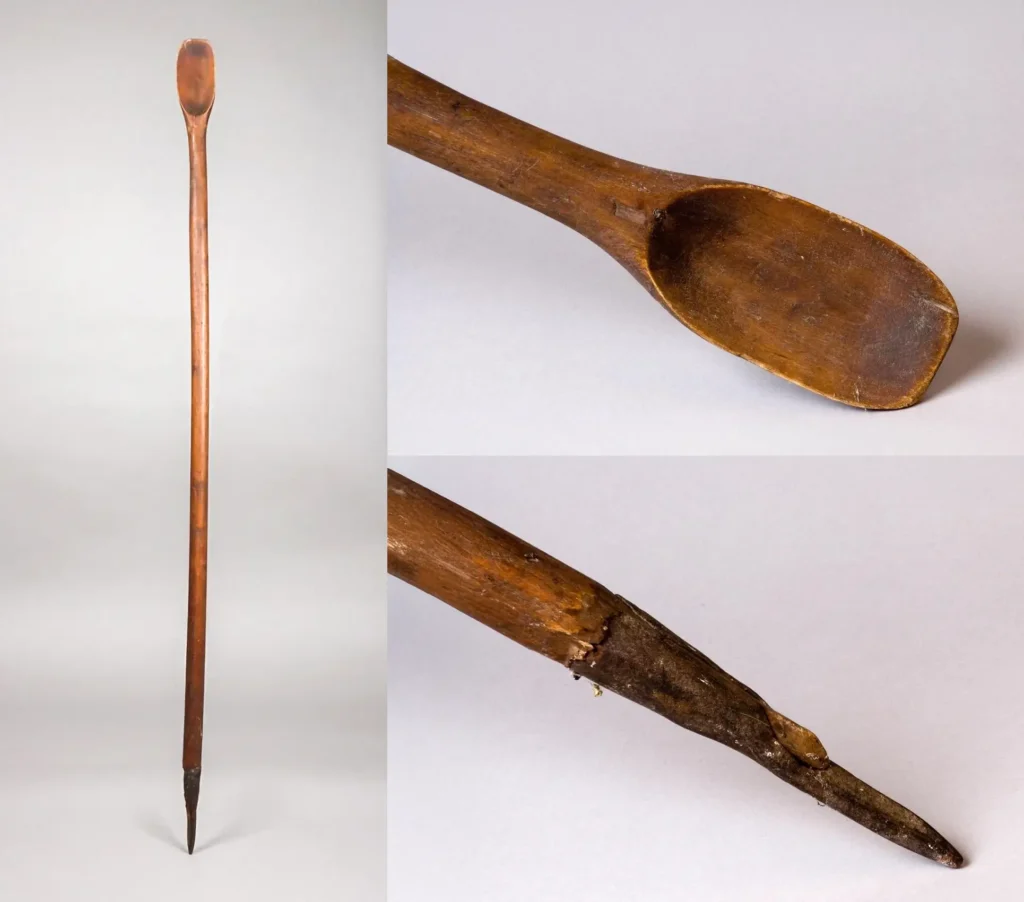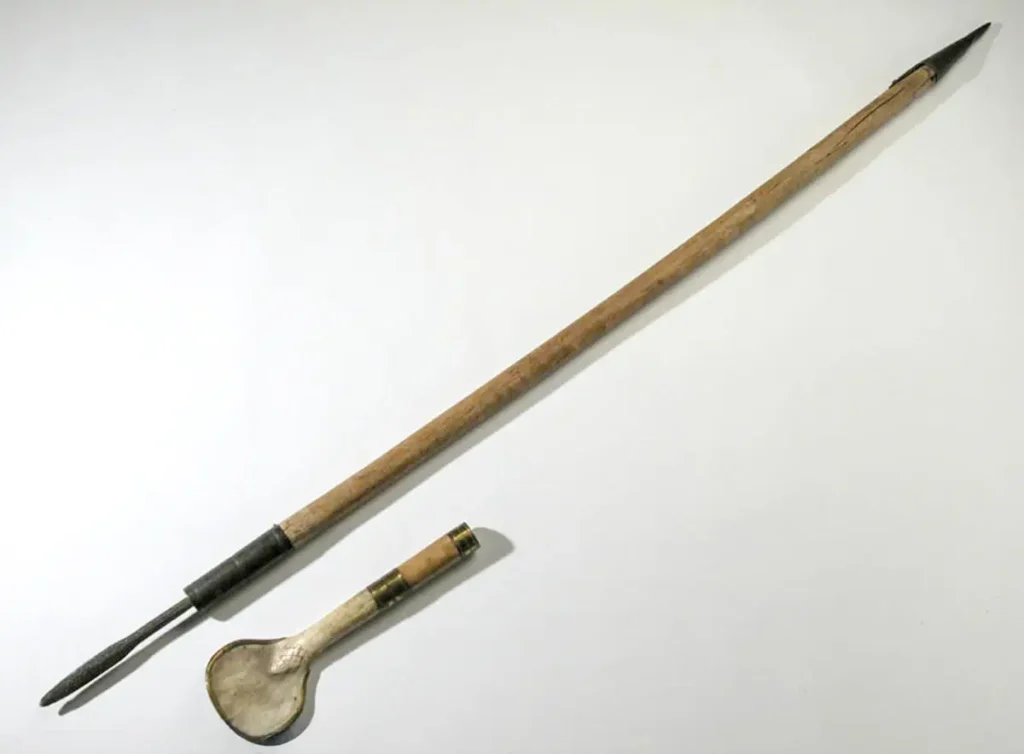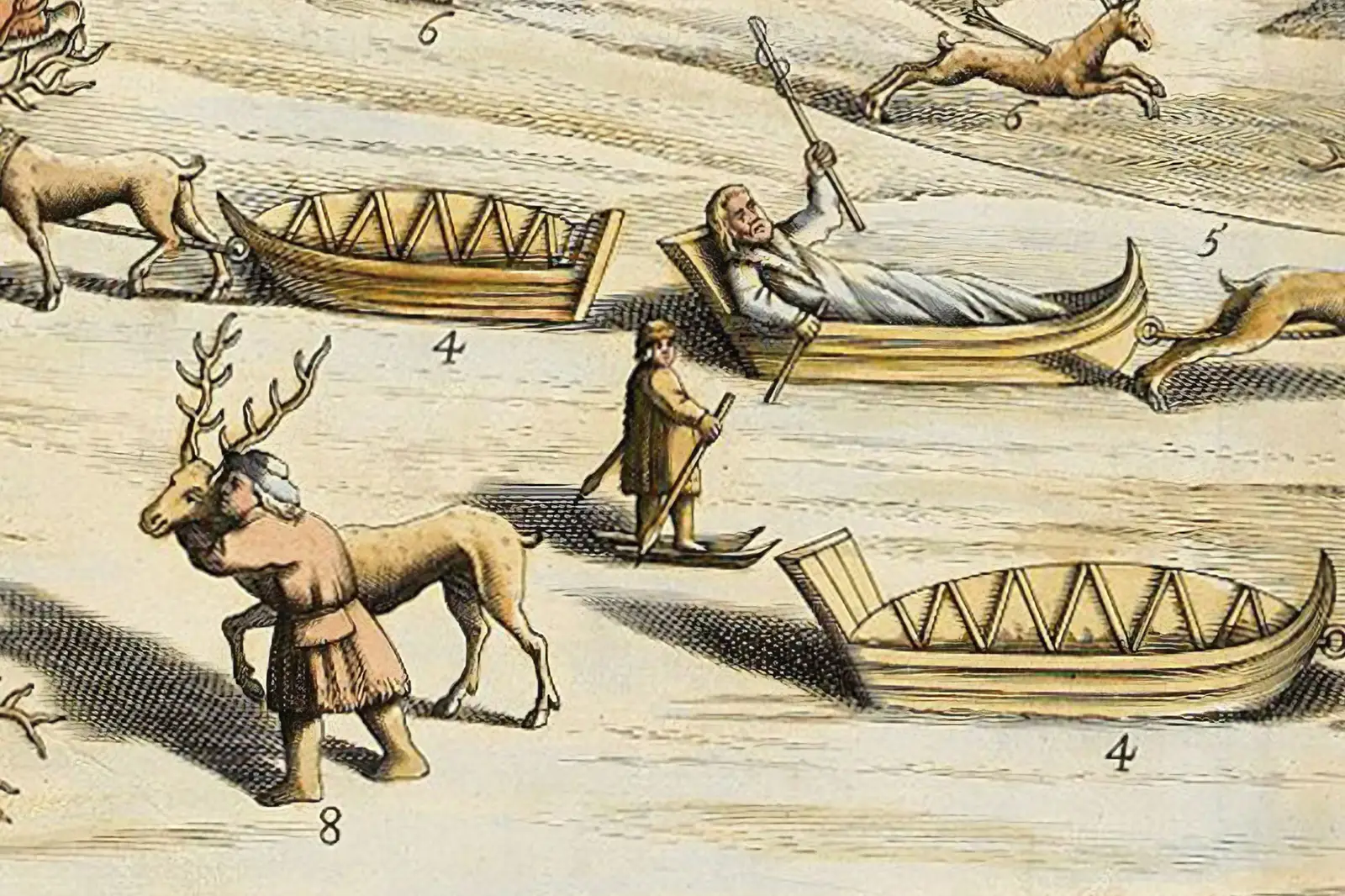The bamboo pole had a massive following among skiers, especially in Scandinavia, for almost fifty years, say from 1905 to 1955. The reason for their use came about because of the increased interest in racing cross-country. Sweden’s Vasaloppet started in 1922 and was followed ten years later by the Norwegian Birkebeinerrennet. And these were only the major marathons.
Before the use of bamboo, the usual single pole was of local wood, sometimes embellished, some with a sort of cup at one end, useful on hunting trips as a drinking vessel or, perhaps, as a disemboweling tool for a shot animal. Others might have a spike on the bottom so the pole could be used as a fighting instrument or defense against an animal attack. But as skiing became a sport, there was a demand for a lighter pole … or two poles.
Generally, it is believed that the use of two poles came from the Finns; they had a lot of flat land and also many iced and snow-laden lakes to cross. In the latter half of the 19th century, pictures of skaters propelling themselves along with two poles appeared, and that may well have influenced the trial of poles for skiing.
For many years, it was believed that the first depiction of two-pole skiing was in Pehr Högström’s German translation, Beschreibung des der Crone Schweden gehörenden Lapplandes, published in 1748.* But Marcel Achard has found earlier evidence in Moses Pitt, The English Atlas, published in 1680. Whether they were bamboo or not, no one can tell, but they don’t look like it.
This appears to be a lone case and two poles did not catch on. As late as 1908, Norwegian super ski-guru, Fritz Huitfeldt bitterly complained that “the use of two poles is not only ugly, it is in conflict with the very essence of skiing. As long as one has two poles to rely upon, he will never learn to handle his skis correctly.”
* Pehr Högström’s original publication in Swedish, in 1746, was titled Beskrifning öfwer de til Sweriges Krona lydande Lapmarker, but that doesn’t contain Carl Wilhelm Cederhielm’s map with the depicted two-pole skier, as in the German translation. Note that the translation refers to Pehr as Peter Högström. In the Danish translation he became Peder.
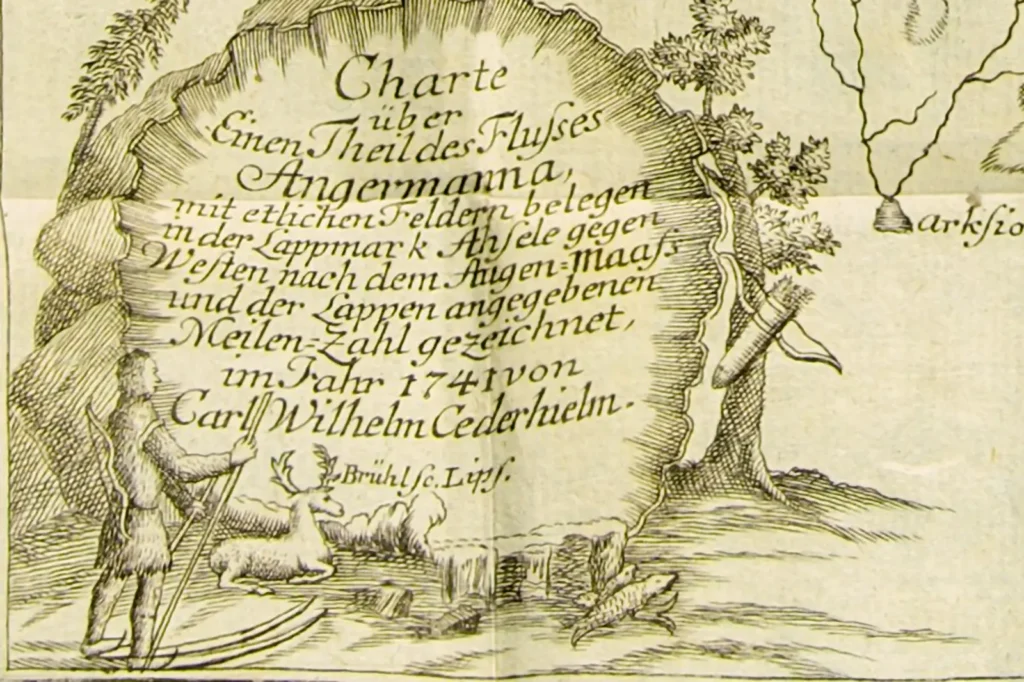
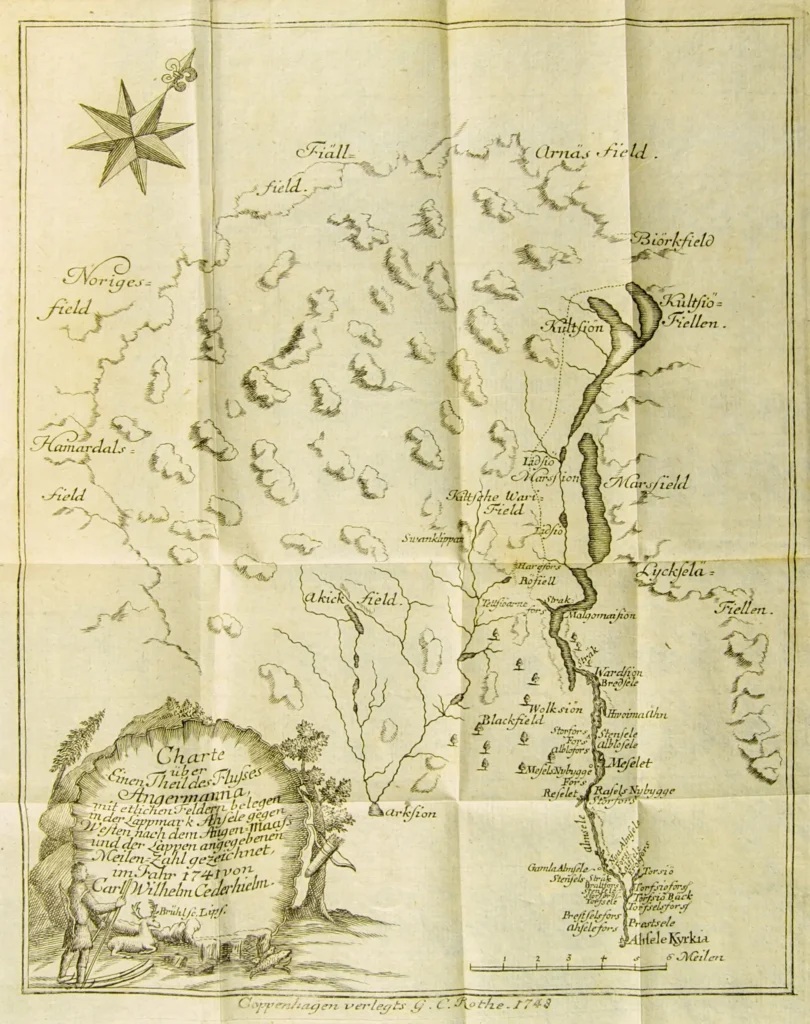
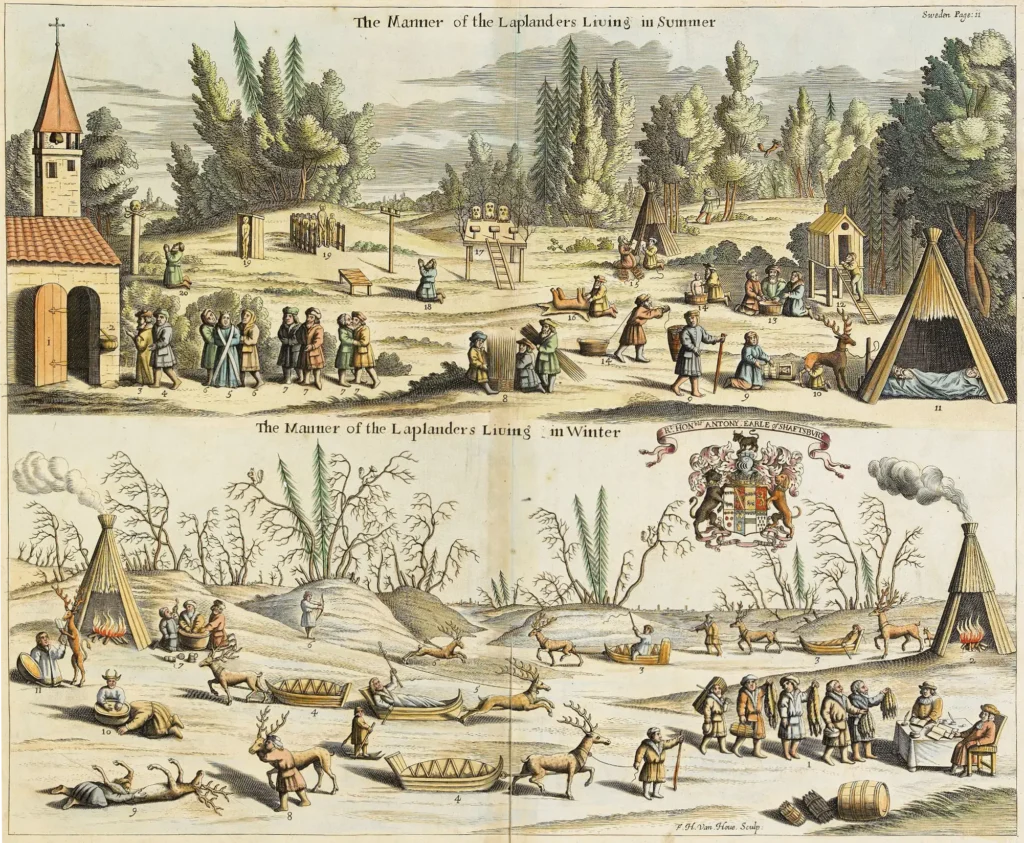
Bamboo enters the world of skiing
Bamboo, however, was not just one particular ”wood” (or grass in botanical sense); there were different strains coming from China, Southeast Asia, and South America. The use of bamboo spawned Tonkin, a type of bamboo, so called because Tonkin, China, was the port of departure in the late 19th century. Bamboo was also used for slalom gates.
Bamboo has one or two properties that made it, and for aficionados like Rimfors, very attractive. First, it could bend rather than break. And if it did break, it did not snap off, but broke down the pole fibers. One way to strengthen the pole, even repair it, was to wind strong and thin string round the knots on the pole. Later, some sort of sticky tape would be used. When I was first skiing in the mid-late 1950s, using old bamboo poles, I would use an early edition of Velcro on either side of the knots on the poles in order to strengthen them. Velcro had been worked on since the early 1940s by a Swiss engineer, George de Mestrel who was granted a patent in 1955.
The other value of bamboo poles was their lightness. Today, however, if you pick up a bamboo pole from the 1920s, first it may be X feet long and have a large disc on the bottom. This was the perfect pole for Arlberg turns as the comparatively heavy rattan disc would allow the downhill turning of a christiania via a body swing that was almost controlled by the weight of the pole. As late as 1952, the Norwegian and Olympic flags on the poster for the Games flew from bamboo poles.
/John Allen
Apart from being a dear friend, E John B Allen is professor emeritus of history at Plymouth State University and historian for the New England Ski Museum, both in New Hampshire, USA. He has conducted close to 50 years of academic research, that has resulted in a dozen books, three of them prized with Ullr awards from the International Skiing History Association, who also honored John with their Lifetime Achievement Award in 2009.
